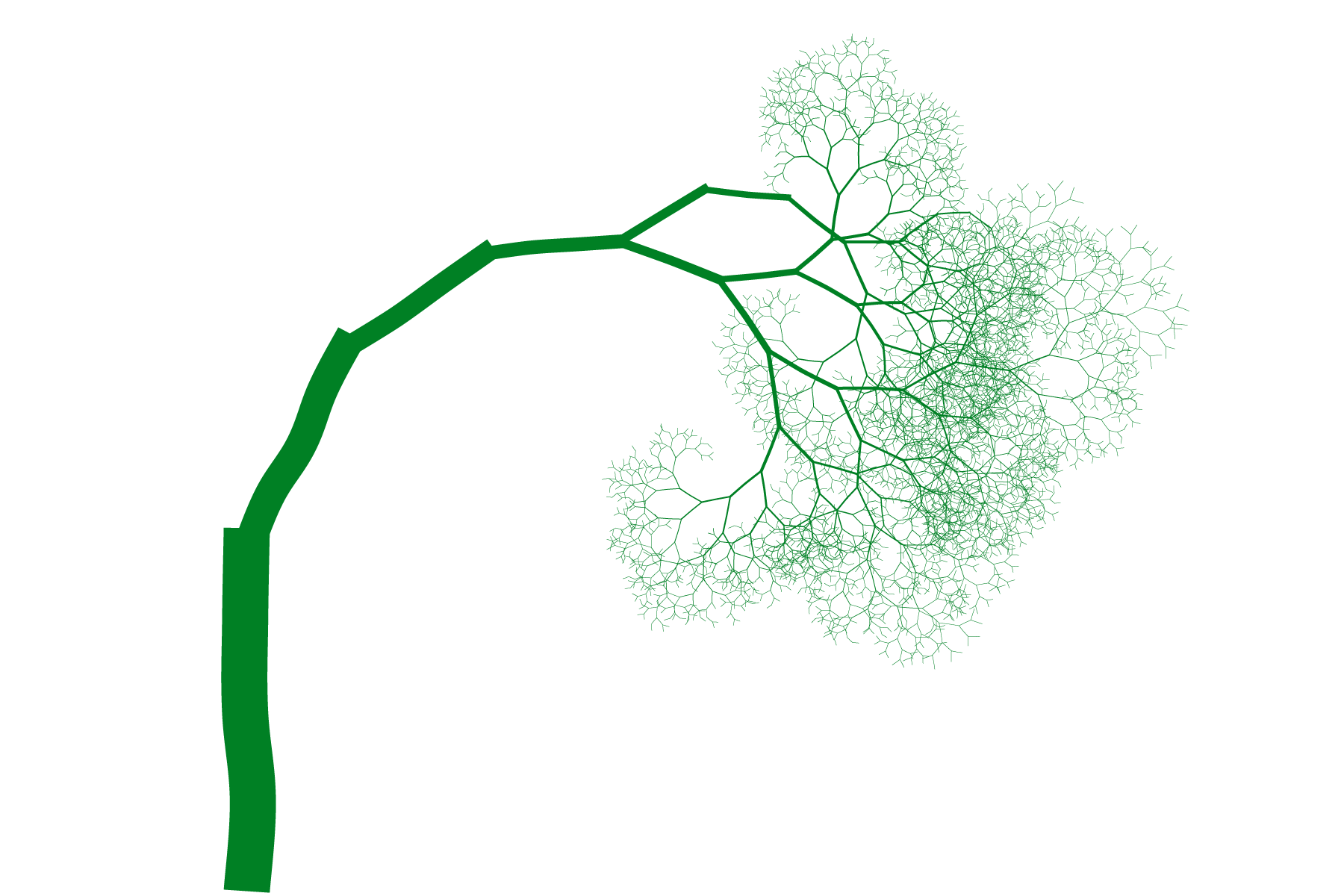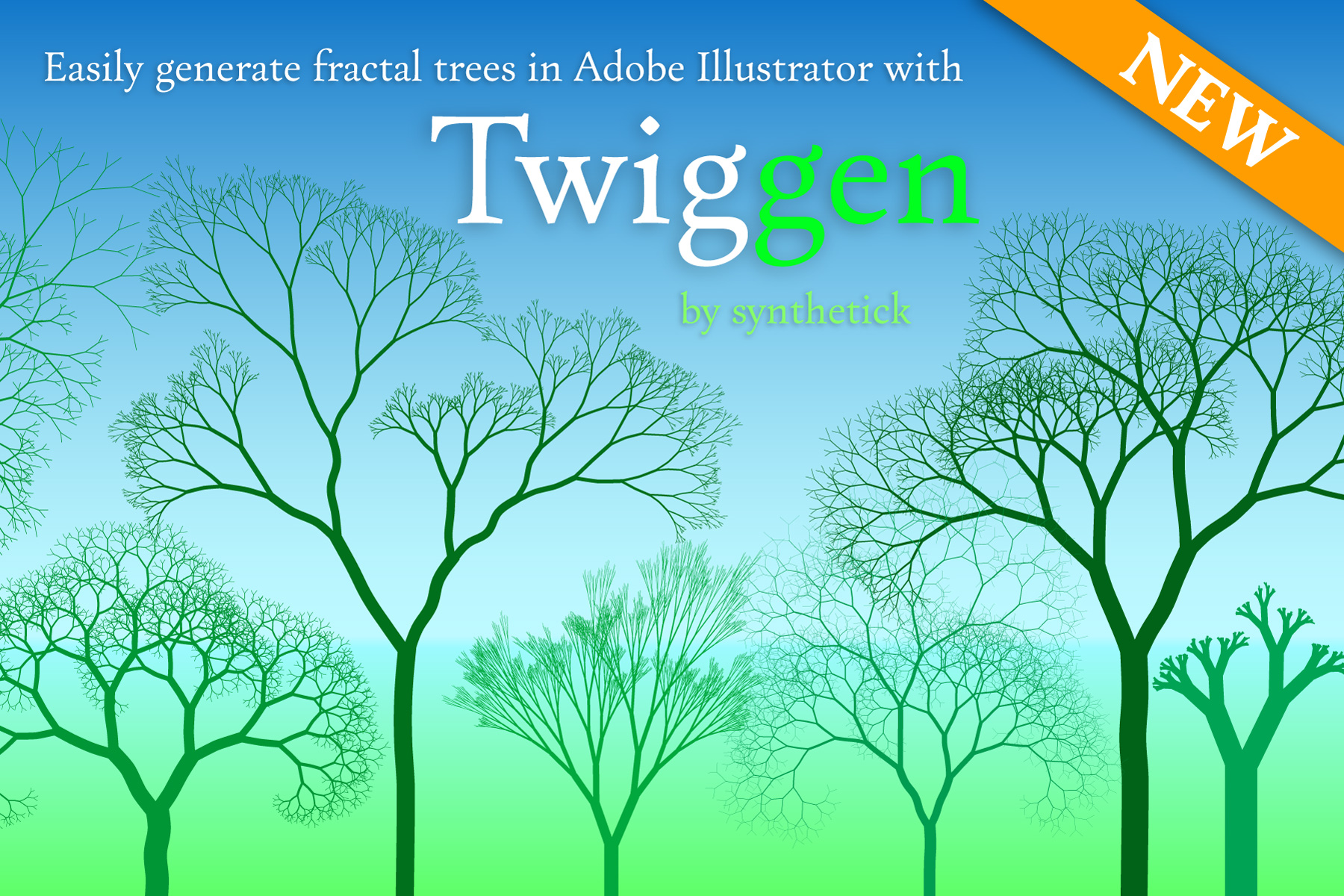 TWIGGEN 1.0 FRACTAL TREE GENERATOR FOR ADOBE ILLUSTRATOR
TWIGGEN 1.0 FRACTAL TREE GENERATOR FOR ADOBE ILLUSTRATOR
Twiggen is a dockable panel extension for Adobe Illustrator that lets you generate customizable fractal binary trees with ease. Designed for both experimentation and precision, Twiggen gives you a robust set of parameters to control the structure, shape, and visual style of generative trees. From sparse, spindly branches to dense, symmetrical canopies, Twiggen makes it easy to explore a wide variety of branching patterns and visual styles.
Whether you’re creating organic illustrations or data-like visual patterns, Twiggen makes it simple to iterate and explore complex tree-like forms.
Key Features:
• Fully customizable parameters - Adjust angles, lengths, randomness, iteration depth, and more.
• Organic styling options - Add natural waviness to branches or preserve perfect geometric
forms.
• Loop-safe generation - Built-in safeguards prevent runaway complexity and performance issues.
• Easy to edit - Generated trees are editable Illustrator path items with strokes only.
• Repeatable randomness - Use seeded pseudo-random generators to reproduce results consistently.
• Panel-based UI - Clean, scrollable interface that docks like any other Illustrator panel.
Compatibility:
• Illustrator CC 2021 and later
• Mac OS and Windows
Installation:
Installation is handled automatically by Adobe Exchange / Adobe Creative Cloud. Or you can use the free tool Anastasiy's Extension Manager to install the .zxp
Initial Branch Length:
Controls the length of the first (trunk) branch of the tree, which will also affect subsequent branch lengths. Longer values = taller trees.
Branch Length Falloff:
Determines how much shorter each branch is compared to the one it grew from. Higher values = more falloff = less branching.
Initial Branch Angle:
Sets the base angle at which branches split from their parent. Wider angles = more spread-out trees.
Branch Angle Falloff:
Controls how the branch angle changes as the tree grows deeper. A value of 1.0 keeps the angle constant. Values below 1 widen the angle per level, making branches spread out. Values above 1 tighten the angle, making a more compact tree.
Initial Stroke Width:
Sets how thick the trunk is when the tree begins. Thicker strokes = bolder, more graphic trees.
Minimum Branch Length:
Defines the shortest branch that will be drawn. Smaller values = finer details and more branches.
Branch Length Randomness:
Adds variation to branch lengths. Higher values = more organic, unpredictable trees. Set both Branch Length Randomness and Branch Angle Randomness to 0 for symmetry.
Branch Angle Randomness:
Adds variation to the branch angles. Higher values = more irregular, natural shapes. Set both Branch Length Randomness and Branch Angle Randomness to 0 for symmetry.
Maximum Iterations:
Limits how many branching steps the recursion will take. Higher values = deeper, bushier trees. In Advanced Mode, this cap is raised, and playing around with the higher values, in combination with Maximum Paths can produce some unusual asymmetric trees.
Maximum Paths:
Caps the total number of paths drawn. Useful for performance control. In Advanced Mode, this cap is raised, and playing around with the higher values, in combination with Maximum Iterations can produce some unusual asymmetric trees.
Wavy Branches:
Adds a natural, flowing feel to your tree by introducing gentle curves into each branch. Choose from four levels.
Advanced Mode:
When checked, unlocks higher limits for both maximum iterations and path count. This allows for more unusual, asymmetrical trees but may increase rendering time slightly longer.
Make Group:
When enabled, all generated branches are placed in a single Illustrator group, making it easy to move or style the tree as one object.
Notes:
• Advanced Mode lifts the maximum recursion depth and maximum number of paths. At these higher values you can generate asymmetric trees because the script uses depth-first recursion:
It draws the entire right subtree (right → RR → RRR…). If it hits the path limit while still on the right side then the left side might never be drawn at all.
• In most cases, branch end caps are neatly hidden by the connection with the next level of branching. However, under certain conditions - such as thick stroke widths, high waviness, extreme initial angles or extreme angle falloff, some caps may become visible. This is typically limited to the trunk and/or a few of the lower branches. You can correct this manually by slightly adjusting the endpoints of the affected branches. Visible caps may also occur when generating asymmetric trees in Advanced Mode.
• The tree will be drawn from the centre of the bottom edge of the artboard.
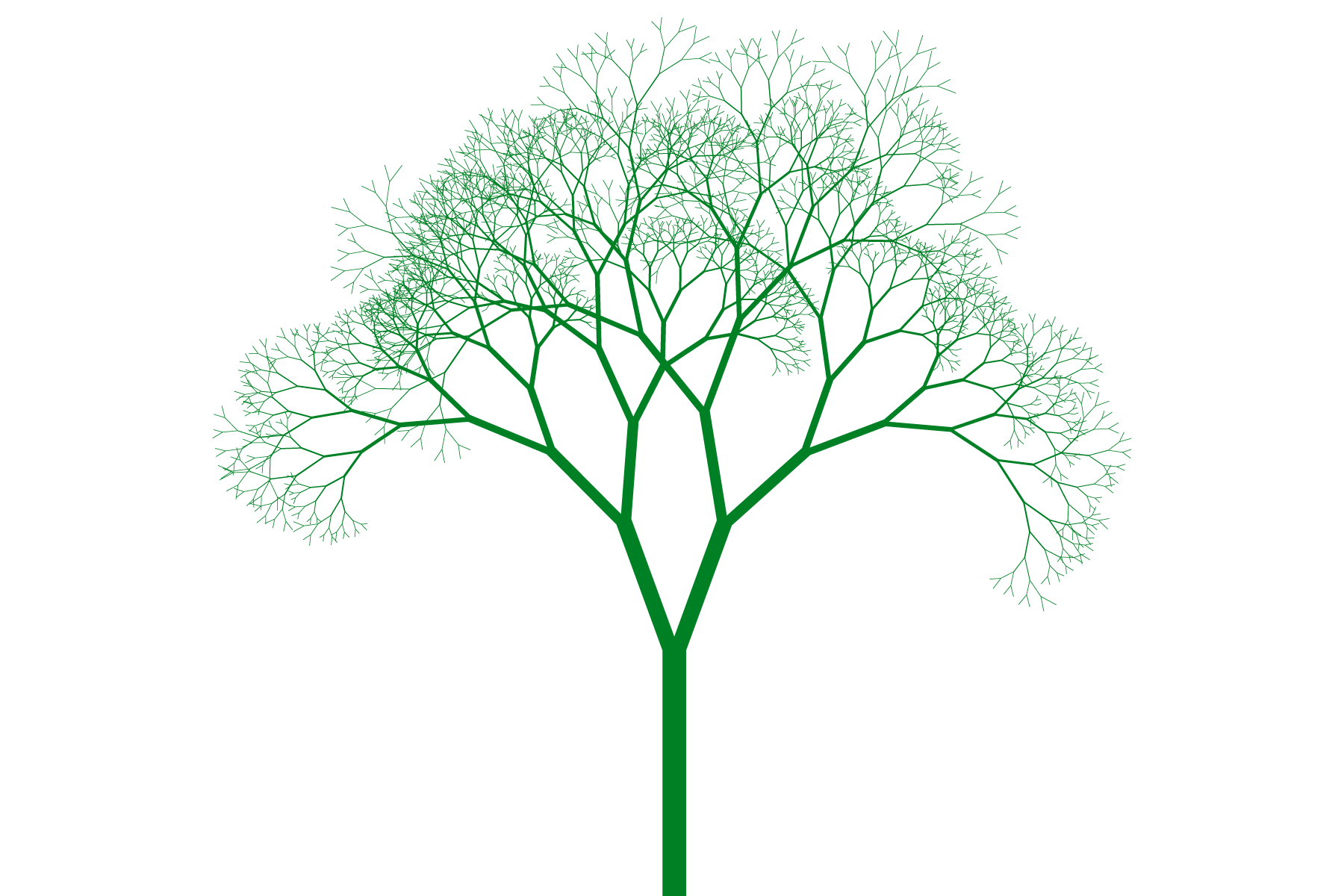
Same tree as above (same random seed) but with Branch Length Falloff = 0.18, Initial Branch Angle = 20, Initial Stroke Width = 70, Wavy Branches = Medium:
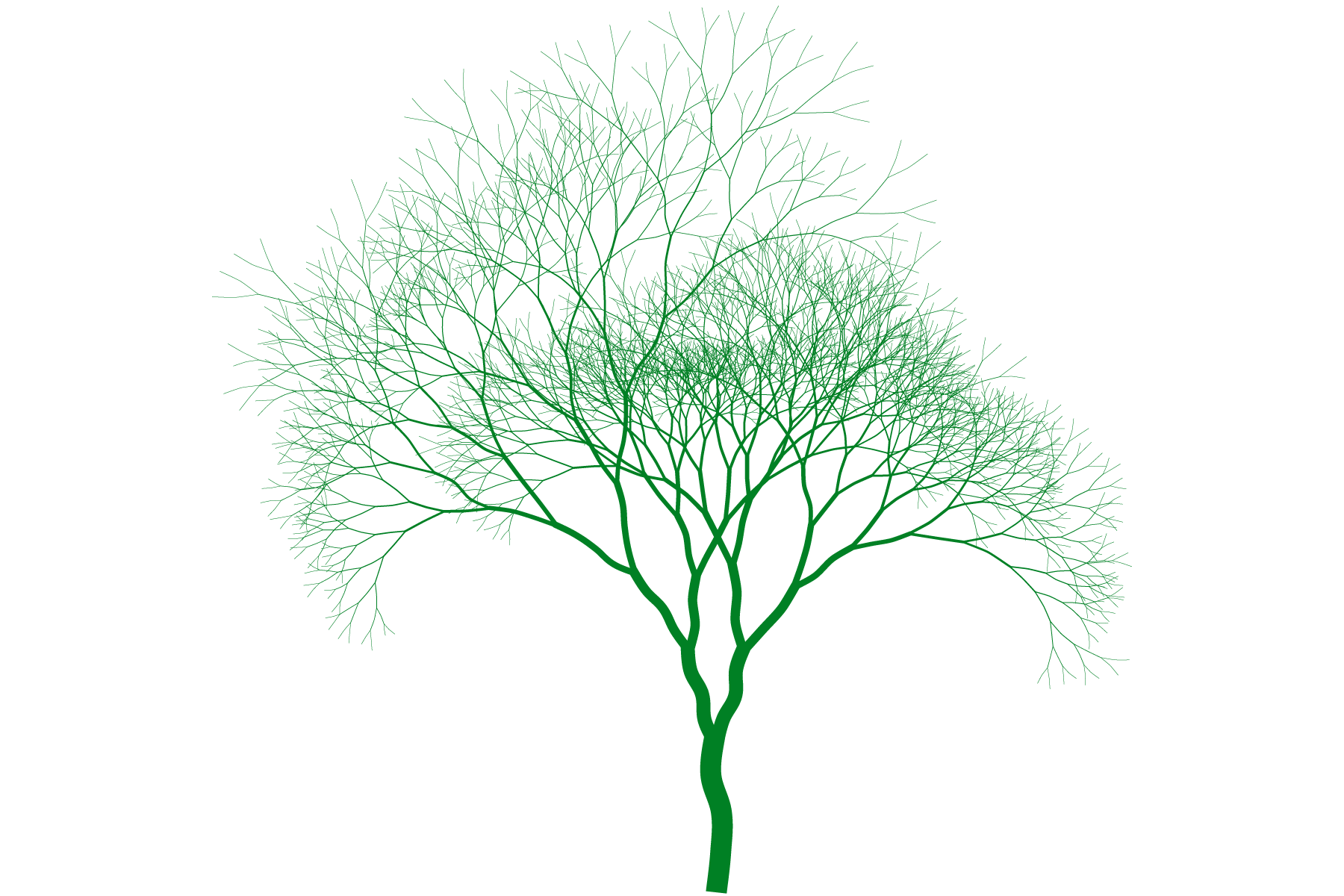
A tree with Branch Angle Falloff = 1.13, Initial Stroke Width = 90, Branch Length Randomness = 0.36, Branch Angle Randomness = 0.36:
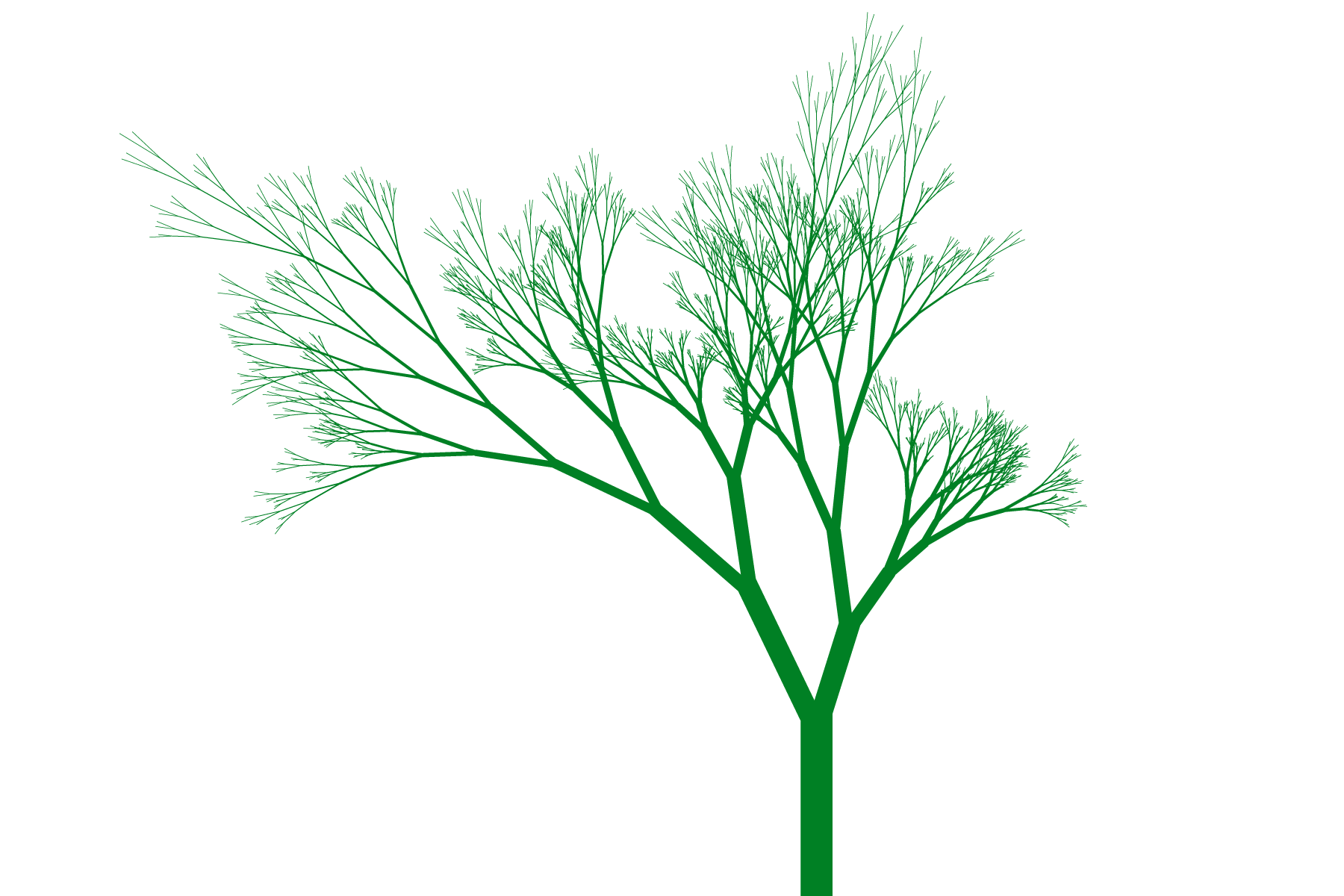
A tree with Branch Length Randomness = 0 and Branch Angle Randomness = 0, and Wavy Branches = Low:
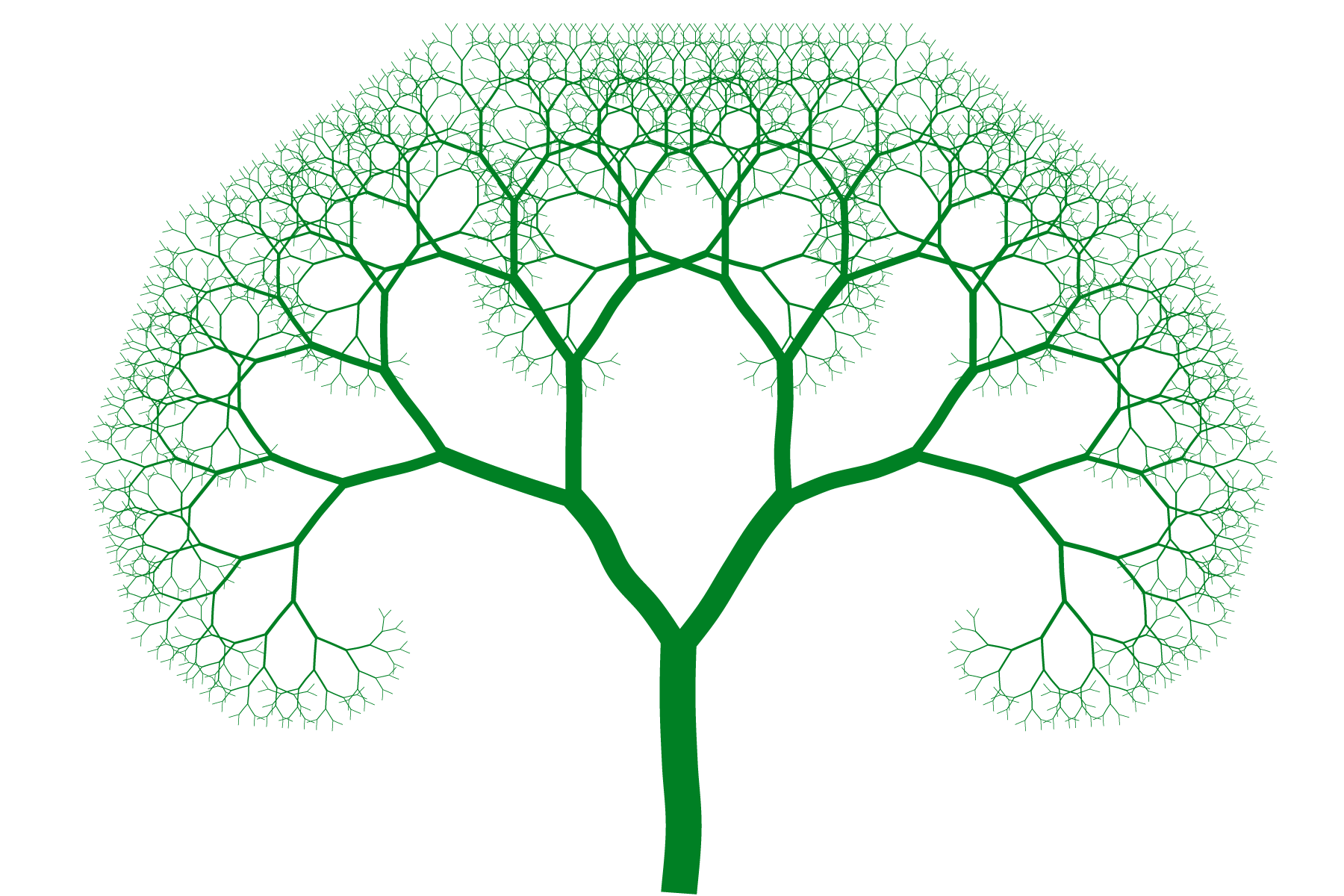
A tree with Maximum Iterations = 8 and Wavy Branches = Medium. Note that the number of segments from trunk to outermost branch is one fewer that the Maximum Iterations value because the final level of recursion produces no branches:
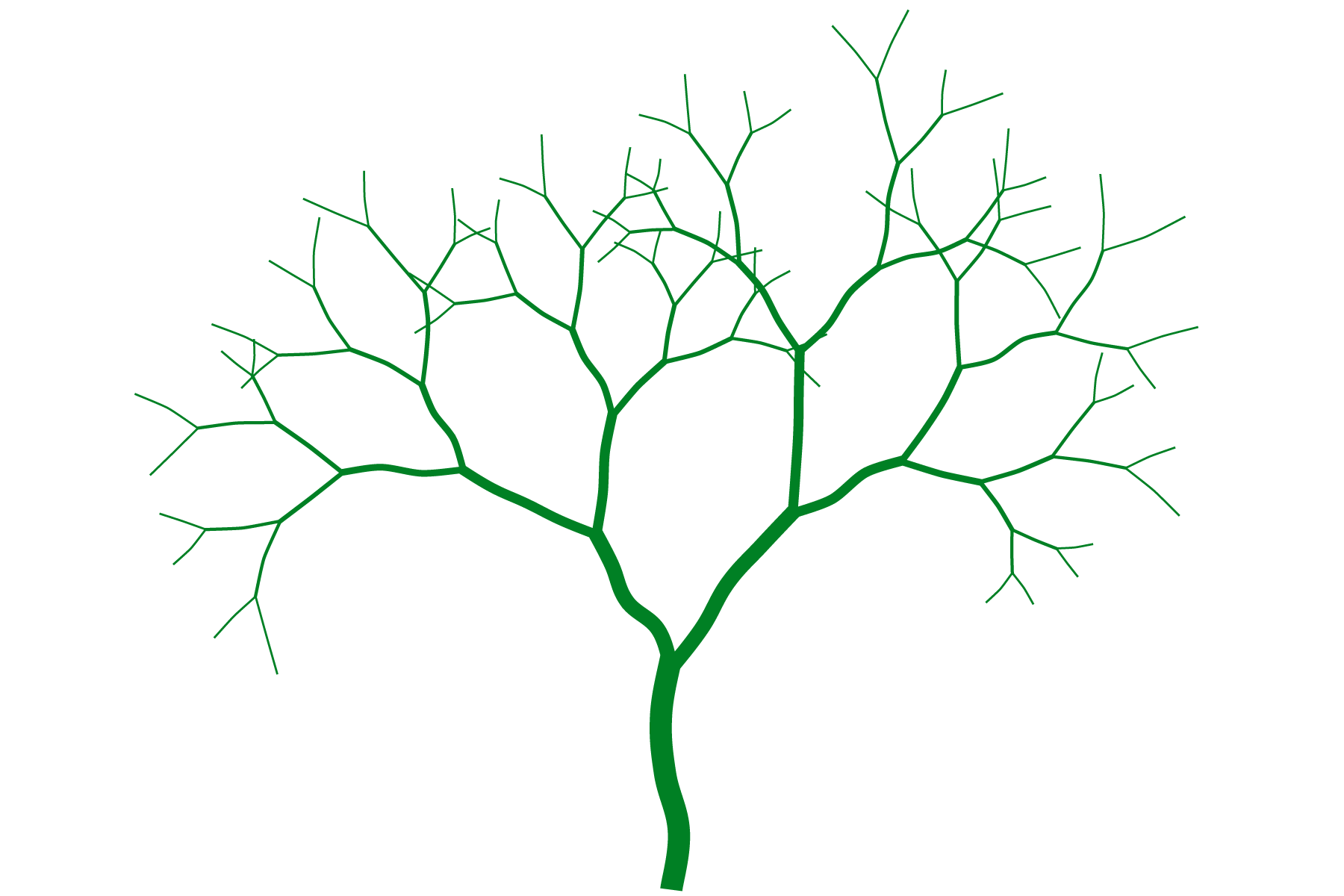
An asymmetric tree generated in Advanced Mode with Maximum Iterations = 18 and Maximum Paths = 6000:
